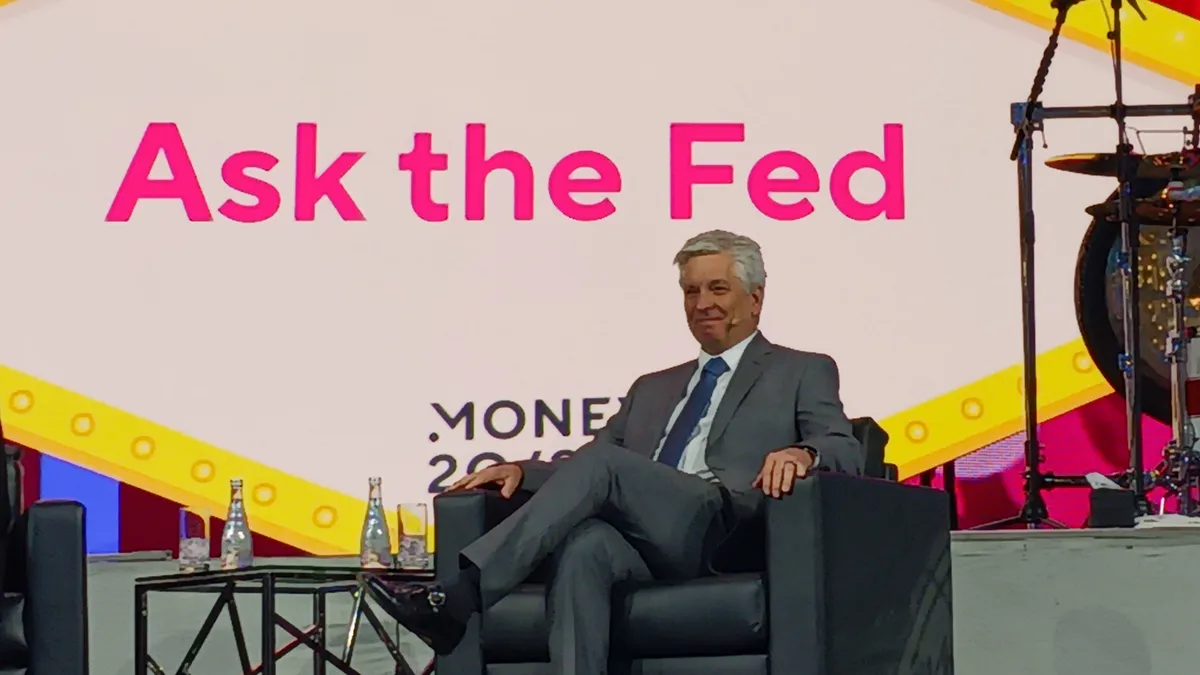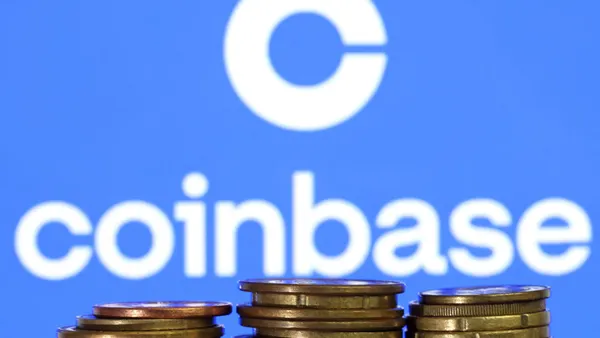Dive Brief:
- Federal Reserve Gov. Christopher Waller called for a balance between private- and public-sector efforts in improving the U.S. payments system, during a Tuesday speech at The Clearing House’s annual conference.
- “While I generally believe that government shouldn't directly compete with the private sector, there are situations where government involvement is needed to solve for market inefficiencies that may arise because of things like incomplete markets, coordination problems, or a lack of resilience,” Waller said.
- It’s too soon to tell whether emerging payment technologies are enough to resolve the problems with the existing payment system, but private-sector payment companies will be best positioned to find out, Waller said. Competition in the private sector, he said, is better suited for “choosing winners and losers” than public-sector institutions and central banks.
Dive Insight:
During the speech, Waller discussed the ways in which public sector institutions should and should not intervene in improving the current payment system. He noted the U.S. is “in an era of rapid change and innovation in money and payments.”
In his remarks, Waller drew on historical payment challenges that the public sector has stepped in to resolve, such as check-clearing issues that arose during the 19th century. While having a diverse network of banks has historically provided competition that has benefited consumers, the need for “clearing and settling payments, coordination problems and information asymmetries across banks,” along with the Panic of 1907, catalyzed the establishment of the Federal Reserve, Waller explained.
“The lesson from this history, as relevant now as ever, is that the payment system has been one of those areas in which the best efforts of the private sector have sometimes fallen short,” Waller said.
Still, he spotlighted the private sector as the best means of innovation. “I have noted my concern that some see these new technologies as an opportunity for the public sector to play a bigger role in payments, which may crowd out private investment,” Waller said. “I believe this would be a policy mistake and a better approach is one in which the private sector continues to have a significant footprint, with the role of government limited.”
Waller cited the Fed’s study of a central bank digital currency as an example of a situation in which the government considered whether it had a role to play. He came to the conclusion there was not an inefficiency problem that could be resolved by government intervention. “In more than three years, I have yet to hear a satisfactory answer as applied to CBDC,” he said.
The Fed began a public discussion of a CBDC with a 40-page report delivered in January 2022, but it didn’t take a specific position on whether to proceed. Continuing with its CBDC research, the Fed released a report this year concluding that issuing a CBDC could cause mixed outcomes for the current financial system, ranging from the risk of bank runs to providing assets for liquidity management.
And the idea of a CBDC has faced political opposition. Last year, the House Financial Services Committee passed a bill that would prevent the Federal Reserve from developing a CBDC, but the bill never advanced beyond the House.
Given the thousands of U.S. financial institutions, the Fed has a role to play in coordinating services, such as connecting banks and credit unions to the Fed’s new instant payments system, FedNow, Waller said. “The role we're playing with FedNow is to help with that coordination problem using our existing connections to those thousands of institutions,” he said. “And that approach is consistent with my overall view of the appropriate role of government — to narrowly address problems like those of coordination that can't always be efficiently solved by the private sector alone.”
So far, FedNow has attracted hundreds of banks and credit unions to the instant payments network and is building out fraud prevention features. Mark Gould, chief payments executive of the Federal Reserve’s financial services division, said last month the agency’s goal is make instant payments ubiquitous in the U.S., likening the rollout of instant payments to the rise of landline telephones.
“American entrepreneurship and technical prowess have generated exciting innovations in payments, and they will continue to do so,” Waller said. “The role of the Federal Reserve is to support that initiative and engage with the private sector to promote innovation while guarding against risks to financial stability. We’ve managed this balancing act before and will continue to do so.”
Waller also highlighted the Fed’s partnership with the Bank for International Settlements. The two entities are collaborating with private-sector firms to determine whether tokenization technology can speed up and reduce costs for cross-border payments.
In his speech, the Fed governor didn’t mention cryptocurrencies or stablecoins, two 21st-century additions to the the payments realm, although he reportedly touched on stablecoins in other remarks that day.
In closing remarks for his speech, Waller left open the possibility for advances.
“It is too early to tell whether some of the new technologies will relieve significant frictions in the payment system, but it is going to be the private sector, betting with its own money, that is best positioned to explore this question,” he said.
The text of the speech included a footnote saying Waller’s views “are my own and are not necessarily those of my colleagues on the Federal Reserve Board.”












